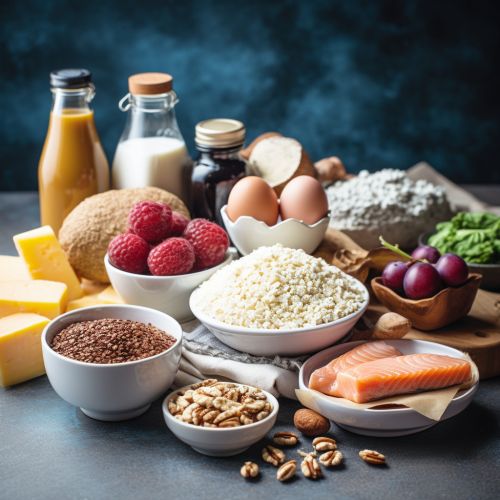Insulin index
Overview
The Insulin Index is a measure of the insulin response in humans to the ingestion of various types of food. It is similar to the glycemic index and glycemic load, but rather than relying on blood glucose levels, the insulin index is based on insulin levels in the blood after ingestion of different foods.


Measurement and Calculation
The insulin index is measured in a similar way to the glycemic index. A test food is consumed by a group of healthy individuals, and blood samples are taken over a period of time to measure the insulin response. This is then compared to the insulin response of a reference food, usually pure glucose or white bread, which is given an arbitrary value of 100. The insulin index value of the test food is then calculated as a percentage of the reference food.
Factors Influencing the Insulin Index
There are several factors that can influence the insulin index of a food, including its macronutrient composition, the presence of other nutrients, the method of cooking, and the individual's insulin sensitivity.
Macronutrient Composition
The macronutrient composition of a food can greatly affect its insulin index. Foods high in carbohydrates, particularly simple sugars, tend to have a high insulin index as they cause a rapid increase in blood glucose levels, which in turn stimulates insulin secretion. However, foods high in protein can also stimulate insulin secretion, even in the absence of carbohydrates.
Presence of Other Nutrients
The presence of other nutrients in a food can also affect its insulin index. For example, the presence of fiber can slow the absorption of carbohydrates and thus reduce the insulin response. Similarly, the presence of fat can slow gastric emptying and reduce the rate at which glucose enters the bloodstream, thereby reducing the insulin response.
Cooking Method
The method of cooking can also affect the insulin index of a food. For example, cooking starches can increase their digestibility and thus increase the insulin response. Similarly, the degree of processing can affect the insulin index, with more processed foods generally having a higher insulin index.
Individual Insulin Sensitivity
Individual insulin sensitivity can also affect the insulin index of a food. People with insulin resistance, such as those with type 2 diabetes, may have a higher insulin response to food than those with normal insulin sensitivity.
Clinical Significance
The insulin index can be a useful tool in the management of conditions such as diabetes and obesity. By choosing foods with a lower insulin index, individuals can help to control their blood glucose levels and reduce their risk of developing these conditions. However, it is important to note that the insulin index is just one factor to consider when choosing a healthy diet, and other factors such as nutrient content and portion size should also be considered.
